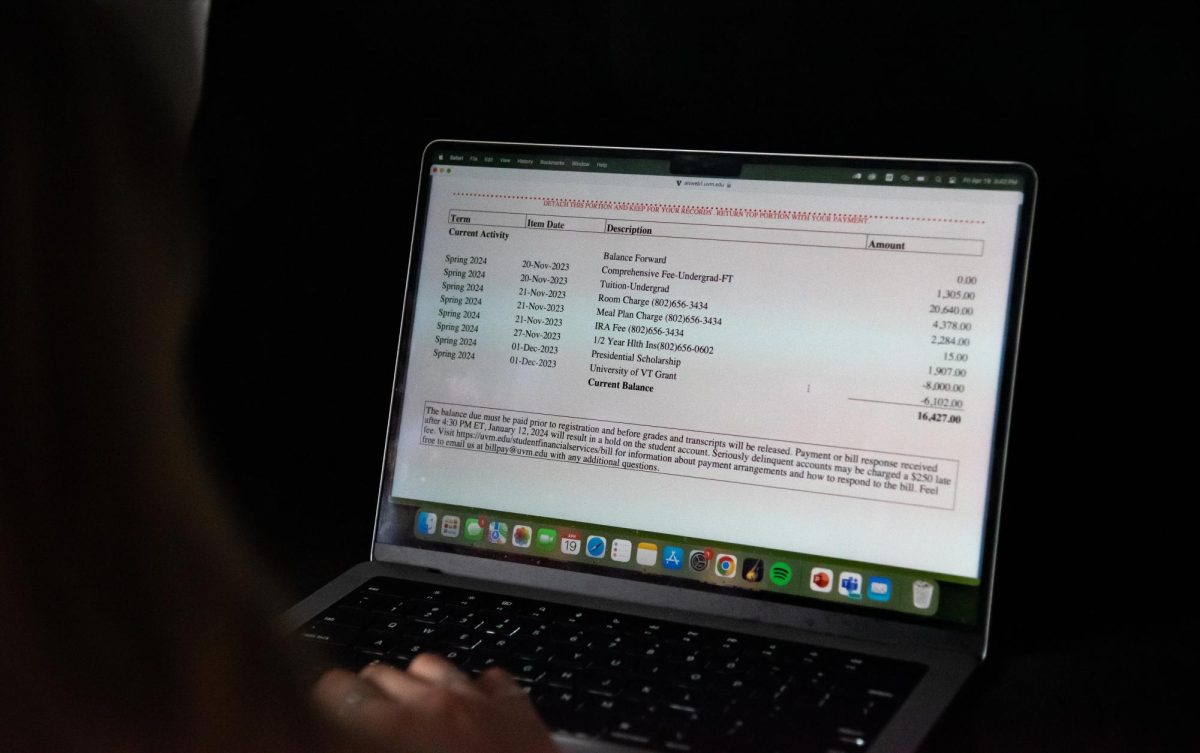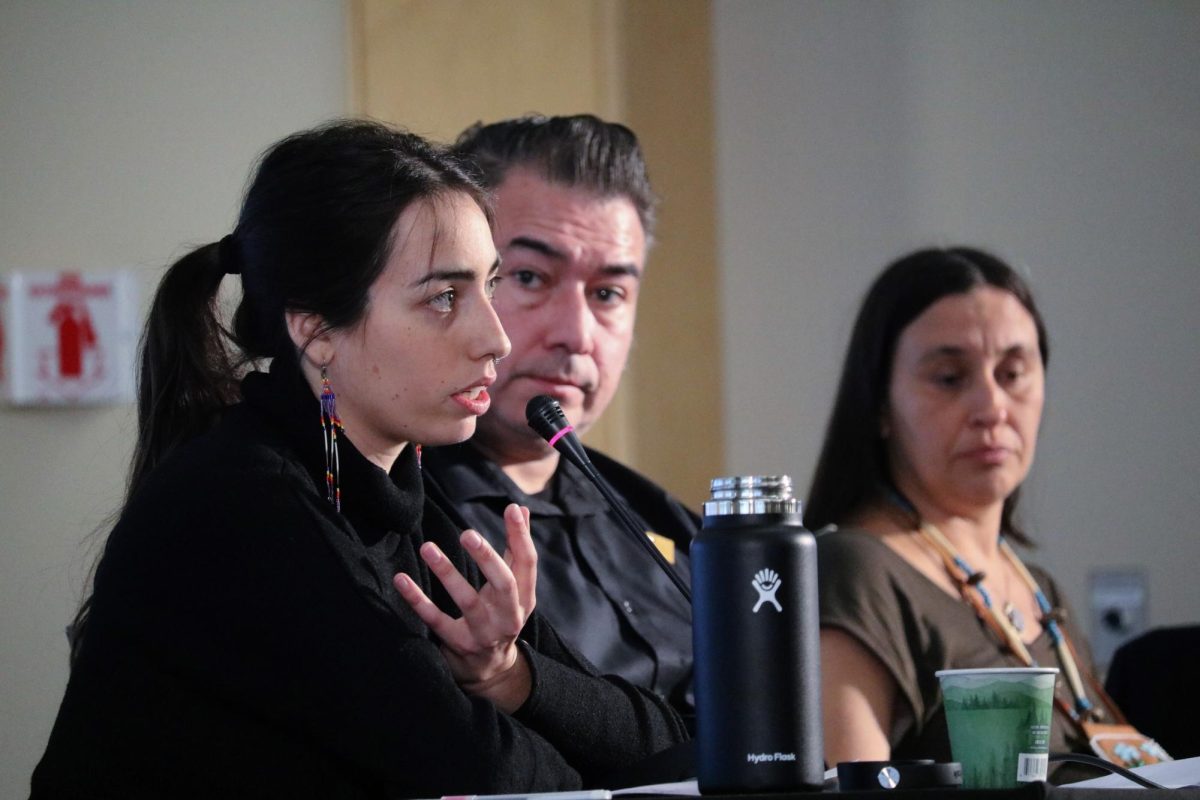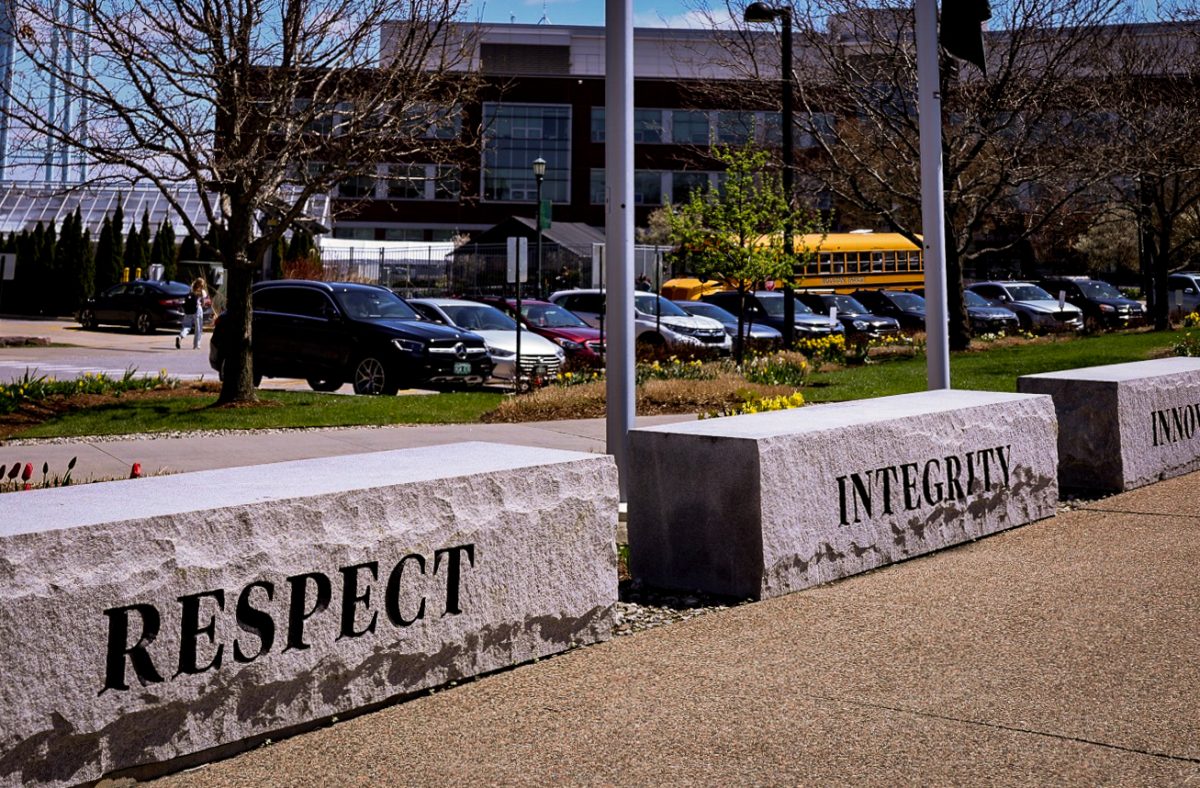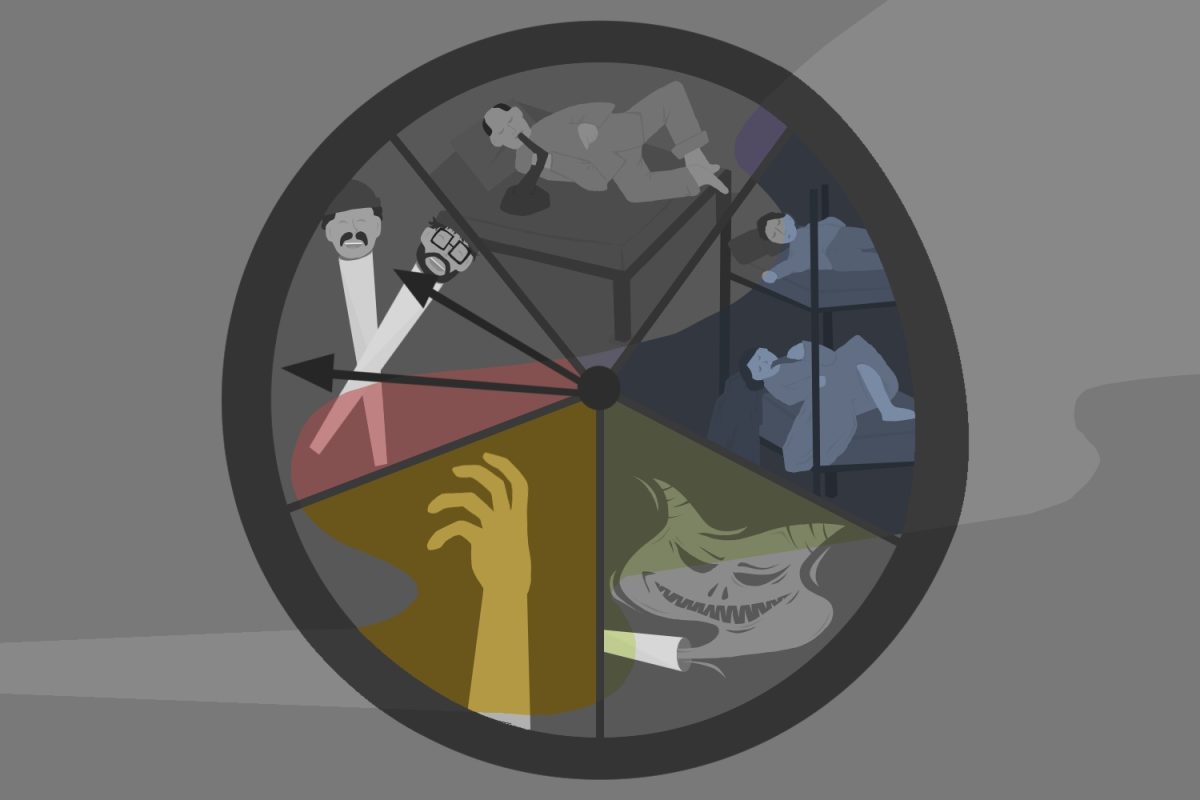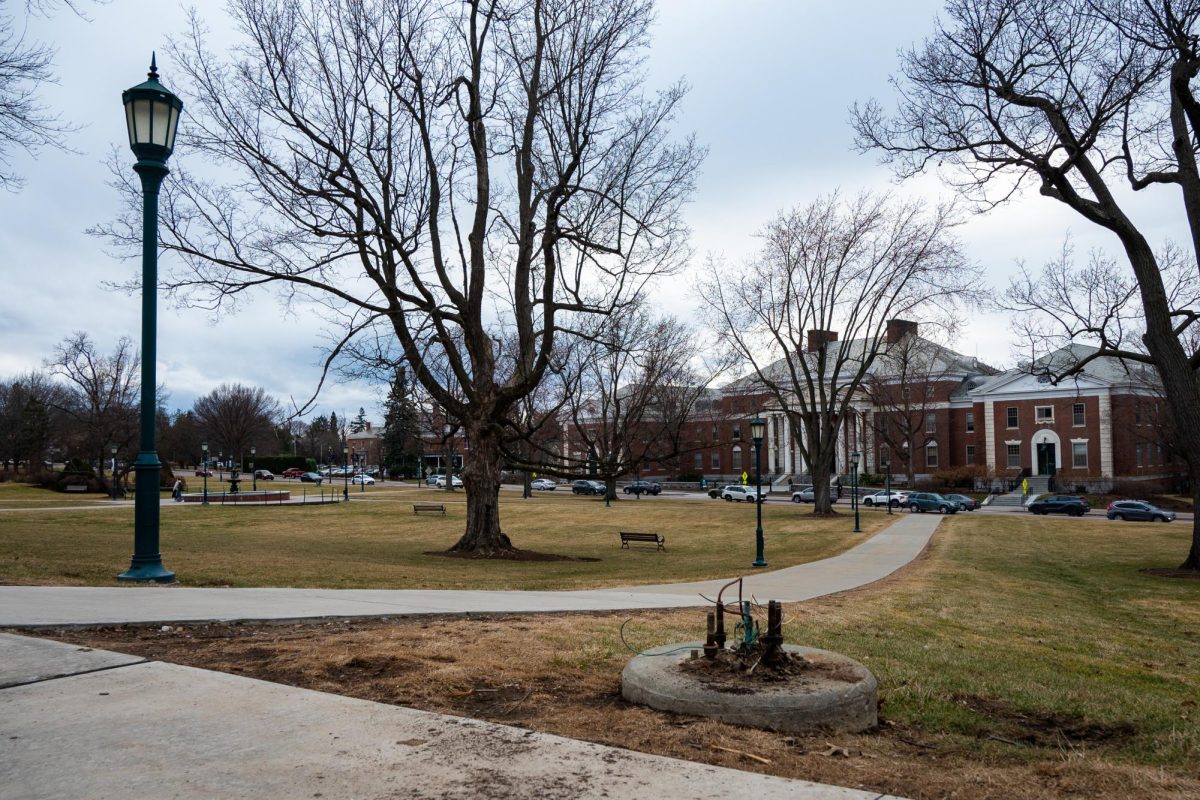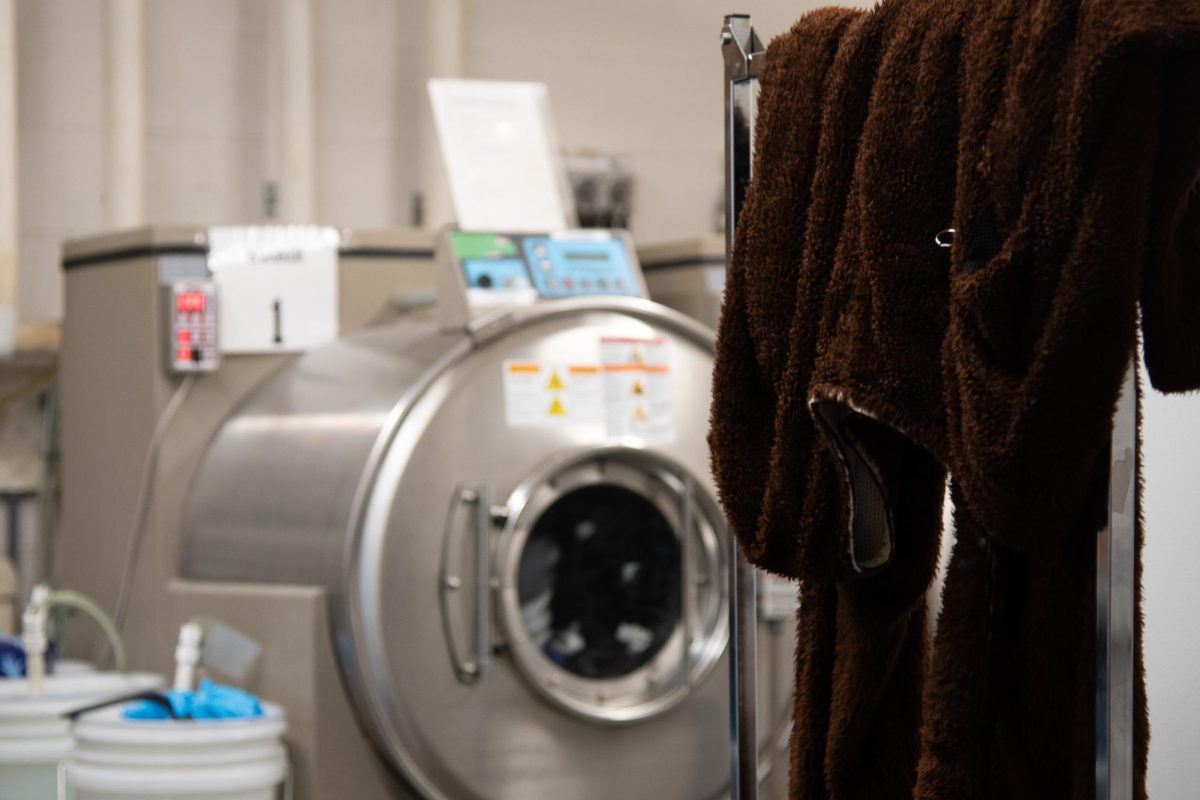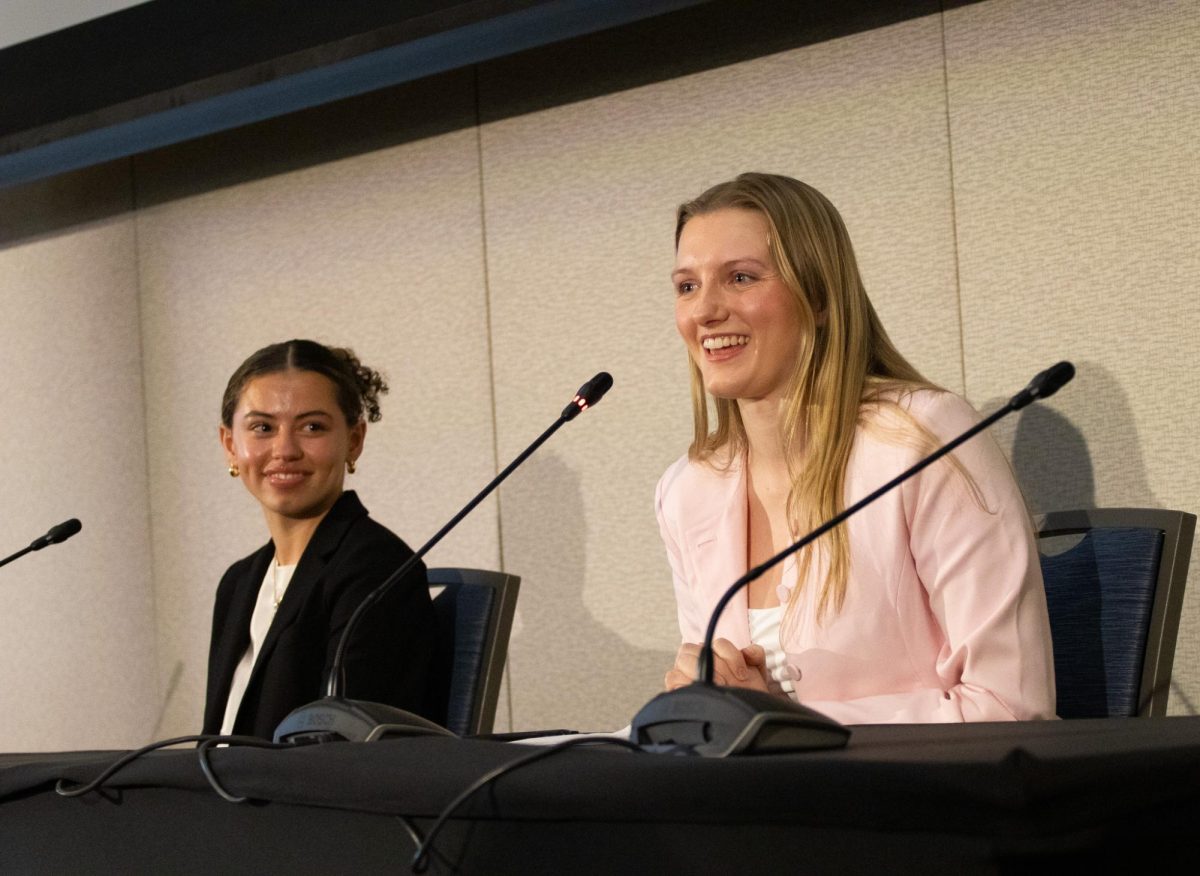Out-of-state students will see a $42,725 tuition fee this upcoming school year, a 3.5% increase. With the bill approaching close to $50,000, there’s a question of how this money is spent.
UVM expects to generate $290 million in revenue from net tuition money this year. Tuition money, state appropriation and other general income all fall under general funding, with net tuition making up 70% of this, according to Shari Bergquist, University budget director.
“When we talk about tuition revenue we’re going to be talking about the general fund bucket, […] composed of multiple sources of revenue, tuition being one of them,” said Bergquist. “That is the bucket of money we’re using to help fund our entire operations at the institutions.”
Seventy percent of this fund is spent on salaries, stipends and benefits, while the other almost 30% goes toward operating and equipment costs.
The FY24 budget gives academic programs almost $25 million in operating and equipment costs, with the Larner College of Medicine receiving close to $14 million of that. Much of this money is used for research equipment, Bergquist said.
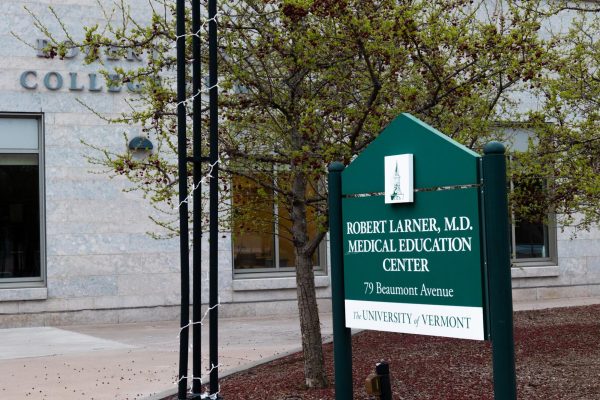
(Emily Kobus)
The Incentive Based Budgeting Model determines how much money is allocated, as the academic units forecast their revenue and expenses. Administrative units’ budgets, such as Physical Plant, are decided through meetings to discuss the needs of these departments, Bergquist said.
The general fund is unrestricted on how the University spends this money, unlike the restricted fund. The two other places of revenue for UVM include this restricted fund and income funds. Restricted funds consist of grants, contracts, gifts and endowment income, whereas the income fund is places like UVM Bookstore or Residential Life that are self-supporting.
Many students face difficulties paying UVM’s tuition, with some having to work full-time to pay off schooling and cost of living, said sophomore Taylor Duguay.
“Currently I have two jobs and work about 40 hours a week. That all goes toward rent, bills and saving to pay off tuition and loan debt,” Duguay said. “I also have student loans, which honestly hurt more than they help as payments are very expensive.”
In addition to tuition, several other fees await students with the University collecting over $12 million in miscellaneous fees. This includes the acceptance, medical application and multipersonal center fees, according to the FY24 budget.
Another charge students see on their semester bill is the $111 student activities fee. This money supports the over 250 recognized clubs UVM has on campus, as well as funding SGA itself, according to Matt Sorensen, treasurer of SGA.
80% of UVM students are involved in at least one club on campus. As demand increases, the student activities fund isn’t able to support students like it used to, Sorensen said.
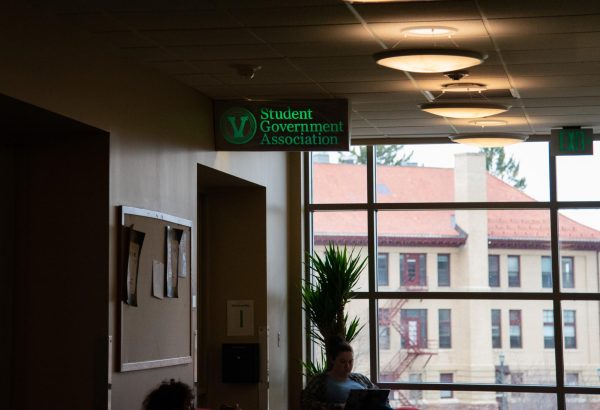
This year, 172 Recognized Student Organizations, submitted an FY ‘25 budget request, 19 more than last year, according to a March 8 email from the SGA Finance Committee to club signers who submitted a budget.
“The allocation rate has gone down roughly 16% in the last three years which is frightening,” Sorensen said. “My first year in SGA the average allocation was 68% in fiscal year budgets, this year it was 52.2%.”
SGA recognized over 30 clubs last year and the money requested continues to grow as organizations increase in size. However, the fee hasn’t changed since the 2019-20 fiscal year, according to Sorensen.
“In my view, that’s scary for a couple of reasons, the first being additional costs to students in clubs and students around campus,” Sorensen said. “When SGA is not able to properly supplement costs for clubs that means the costs to enter are higher […] which all puts additional burdens on students.”
Sophomore Aaron Solomon, treasurer of FeelGood, experienced this decreased allocation rate following recently submitting FeelGood’s budget.
“As club-signers, we run our clubs off the money we get from [SGA], and [they] only have money that comes in from the student activities fee,” Solomon said.
Without a change to the student activities fee and more resources coming into SGA, the allocation rate is expected to continue to fall. Losing even a portion of the budget restricts clubs’ ability to operate significantly, Solomon said.
“We all love to brag about how many clubs we have at UVM, how many members are in those clubs and the support that we get, but the truth is we can not continue to support the number of clubs we do or the number of people we do without substantial funding,” Solomon said.
In the interim, SGA has been trying to find other solutions to support clubs. The club debt forgiveness program forgave the debts of over 50 clubs, which will hopefully lessen their reliance on SGA, Sorensen said.
“I am still optimistic about our ability to find a solution and am motivated by the enthusiasm and dedication of club signers and other conversations I have had with administrators who understand the needs of students,” Sorensen said.


